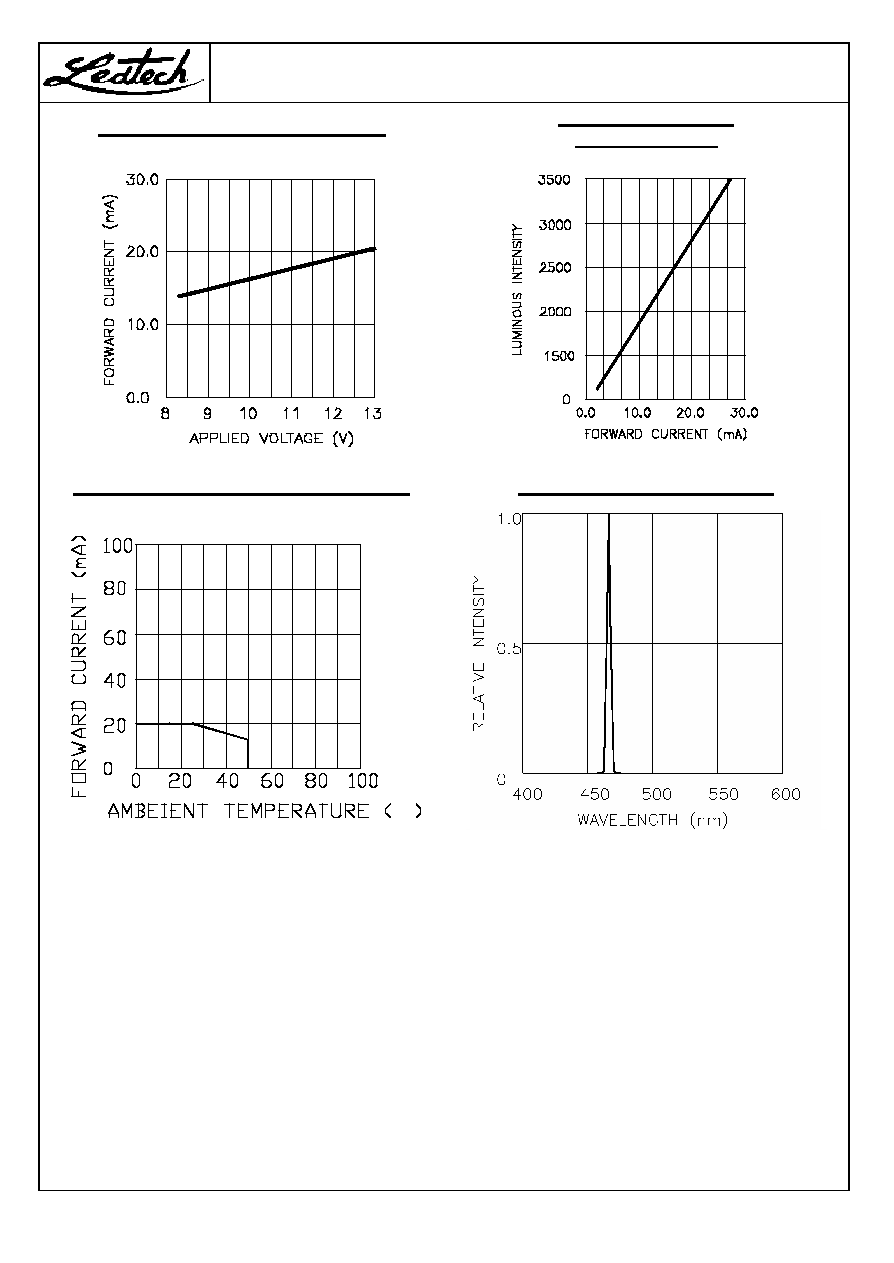
LTB93-B101B012BP
10.0MM MINIATURE
LAMP
Features
Absolute Maximum Ratings at T
A
=25
OPERATING TEMPERATURE RANGE......................................................... -25 TO + 50
STORAGE TEMPERATURE RANGE.......................................................... -25 TO + 80
* LOW CURRENT REQUIREMENTS
* HIGH LIGHT OUTPUT
*HIGHER RELIABILITY
*VIBRATION AND SHOCK RESISTANCE
PRELIMINARY
Precautions:
These products are sensitive to static electricity; high standard of care must be fully taken when
handling them. Particularly if an over-voltage that exceeds the Absolute Maximum Rating of
these products were applied, the overflow energy will cause damage to and possibly result in
destruction of these products. Buyer shall take absolute secure countermeasures against static
electricity and surge when handling these products. Ledtech give no other assurance regarding
the ability of product to withstand ESD.
Eye Safety Information
These LED devices are measured to be AEL Class 2 LED Products per IEC 825-1 and CENELEC EN60825-1 Standards when operated at the
maximum data sheet dc drive current. For eye safety, do not stare into the light beam of these LED devices at close range.
Electrical/optical characteristics at T
A
=25
WAVELENGTH
TYP.
I
F
@20mA (nm)
FORWARD
CURRENT
@ 12V (mA)
LUMINOUS
INTENSITY
@ 12V (mcd)
PART NUMBER
BASES
MODEL
MATERIAL
EMITTING
COLOR
d
TYP
MIN.
TYP.
VDC,
VAC,
BI-POLAR
LTB93-B101B012BP
BAYONET
InGaN
BLUE
470�10
19
1800
3000
BI-POLAR
(1) ALL MODELS ARE CENTER ANODE , INSERT C AFTER FOR CENTER CATHODE.
Package Dimensions
1.
ALL DIMENSIONS ARE IN mm
2.
TOLERANCE IS � 0.5mm UNLESS OTHERWISE NOTED.
REV.1
NOTES
1
WE WILL TO PROVIDE ONE-TO-ONE REPLACEMENT OF ALMOST ANY INCANDESCENT BULB
BEING USED WITHOUT MODIFICATION TO EXISTING EQUIPMENT
2
VERIFY YOUR APPLICATION PARAMETERSSUPPLY VOLTAGESERIES RESISTANCESOCKET
TYPEPOLARITYAMBIENT CONDITIONS
3
CUSTOMER DESIGNS ARE ALWAYS WELCOM

